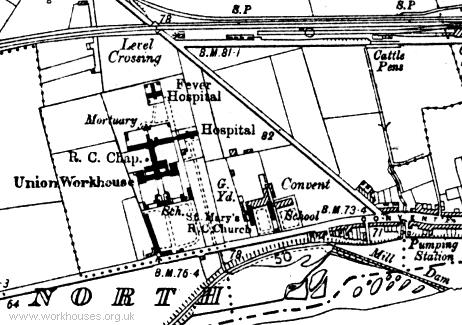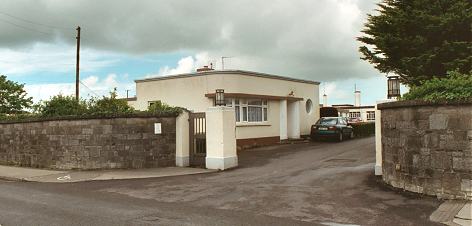Listowel, Co. Kerry
Listowel Poor Law Union was formally declared on the 27th March 1840 and covered an area of 326 square miles. Its operation was overseen by an elected Board of Guardians, 27 in number, representing its 21 electoral divisions as listed below (figures in brackets indicate numbers of Guardians if more than one):
Co. Kerry: Abbeydorney, Ardfert, Ballyheigue, Ballylongford (2), Drumkeen (2), Duagh, Gunsborough, Kilconly, Kilfeighny, Kilflyn, Killahan, Killahinny, Kilmoily (2), Kilshinane, Kiltomy, Knockanure, Lissleton, Listowel (3), Newtownsands, Rattoo, Tarbert (2).
The Board also included 9 ex-officio Guardians, making a total of 36. The Guardians met each week at noon on Thursday.
The population falling within the Union at the 1831 census had been 65,198 with divisions ranging in size from Kilflyn (population 1,072) to Listowel itself (6,802).
The new Listowel Union workhouse was erected on a six-acre site half a mile to the west of Listowel at the north side of Convent Lane (now Road). The building and operation of a workhouse had to be financed by the ratepayers of each union and in many places was seen as an intolerable imposition from England and its officials. It took until 7th February 1844 to raise the first poor rate in Listowel, with the workhouse being declared fit for the reception of paupers on 17th August 1844, and not receiving its first admissions until 13th February 1845.
Designed by the Poor Law Commissioners' architect George Wilkinson, the building was based on one of his standard plans to accommodate 700 inmates. Its construction cost £5,980 plus £1,276 for fittings etc. The workhouse location and layout are shown on the 1921 map below.

Listowel workhouse site, 1921
The buildings followed Wilkinson's typical layout. An entrance and administrative block at the south contained a porter's room and waiting room at the centre with the Guardians' board room on the first floor above.
The main accommodation block had the Master's quarters at the centre, with male and female wings to each side. At the rear, a range of single-storey utility rooms such as bakehouse and washhouse connected through to the infirmary and idiots' wards via a central spine containing the chapel and dining-hall.
During the famine in the mid-1840s, sleeping galleries were erected to accommodate an additional 100 inmates. A fever hospital to accommodate 46 patients was erected at the north-east of the workhouse.
The workhouse closed in 1921. In February 1922, the Guardians received a deputation headed by Mr J. Crowley with a view to acquiring part of the building for use as a sweet factory. The Board agreed to their request.
The workhouse buildings no longer exist and a local hospital now occupies the site.

Listowel former workhouse site from the south, 2002
© Peter Higginbotham.
Records
Note: many repositories impose a closure period of up to 100 years for records identifying individuals. Before travelling a long distance, always check that the records you want to consult will be available.
- Kerry County Library, Moyderwell, Tralee, Co. Kerry. Holdings include Board of Guardians' minutes (1845-1922).
Bibliography
Links
- None.
Unless otherwise indicated, this page () is copyright Peter Higginbotham. Contents may not be reproduced without permission.


